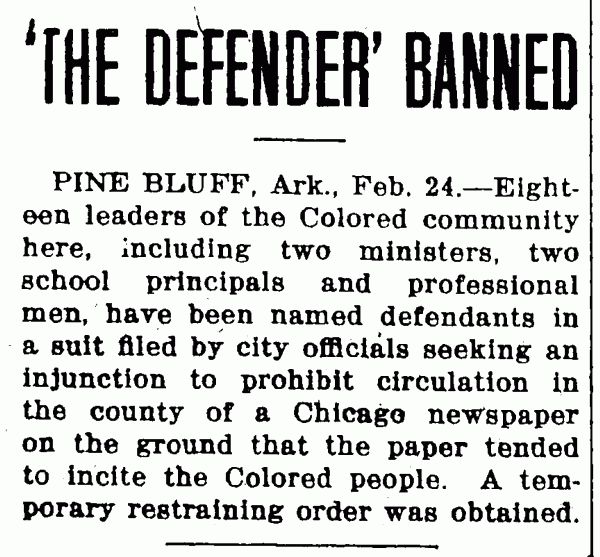On May 6, 1905, Robert Sengstacke Abbott published the first issue of the self-professed World’s Greatest Weekly, The Chicago Defender. Although Abbott originally cobbled it together from other newspaper articles and sold it door to door, the circulation would reach hundreds of thousands of African Americans. It drove the Great Migration of several million southern African Americans northwards.
The Chicago Defender reflected the ideals of the Progressive Era of the late nineteenth and early twentieth century. Editorials and cartoons exposed lynching and Jim Crow segregation laws. The paper avoided the language of the day, referring to African Americans as the Race, Race Men and Race Women. It did not receive official distribution in the south, out of fear of attacks by the Ku Klux Klan. Instead, this paper of the people was smuggled via train by Pullman porters. The stories would be shared orally, at an estimated five people per copy.
Articles were designed to entice southern African Americans to move north, particularly to Chicago. According to Abbott, the city provided jobs and community. The Defender touted restaurants, theatres and nightclubs. It sought laborers to fill factory jobs. At the same time, Upton Sinclair’s The Jungle painted a very different picture. Published a year after The Defender was born in 1906, the muckraking novel showed a city awash in corruption and the blood of slaughterhouses. Immigrants were forced to work and live in squalor. How much better could things be for African Americans? Public reception of Sinclair’s novel led to the passage of the 1906 Pure Food and Drug Act, so conditions improved in Chicago and nationally. Perhaps as a lawyer and businessman, Abbott’s focus on nurturing an African American community may have overlooked the conditions of the proletarian immigrant community. Then again, predatory landlords undoubtedly sounded better than sharecropping and lynchings.
The Defender grew with the Great Migration. Half a million African Americans moved North between 1915 and 1920. Chicago’s population swelled 148 percent between 1910 and 1920. The Defender’s national circulation reached 100,000 copies by 1917.
World War I factored into the Northern growth. Before the United States entered the War, The Defender ran an editorial on August 5, 1916, encouraging the Migration. “The world’s war has proved a blessing to us. The shutting down of immigration, due to the war, has created a demand for our labor … [and since] we need an opportunity to earn our bread and to protect our homes as other men … our only hope is to leave that country [the South] at once for a better land.” The US declared war on April 6, 1917. Abbot called for a Great Northern Drive day on May 15, 1917. The Defender featured train schedules and posted job listings in encouragement. The call for labor worked in tandem with the war effort.
The paper continued to fight against segregation and for armed forces integration. Over the years, it printed the works of Gwendolyn Brooks and Langston Hughes. Robert Sengstacke Abbott died on February 29, 1940. His nephew John H. Sengstacke succeeded him at the helm of The Defender. On February 6, 1956, the World’s Greatest Weekly became the Chicago Daily Defender. Sengstacke would publish it until he died on May 28, 1997. In 2003, it returned to weekly publication as it is today.



There are no voices yet... Post-script us a message below, won't you?